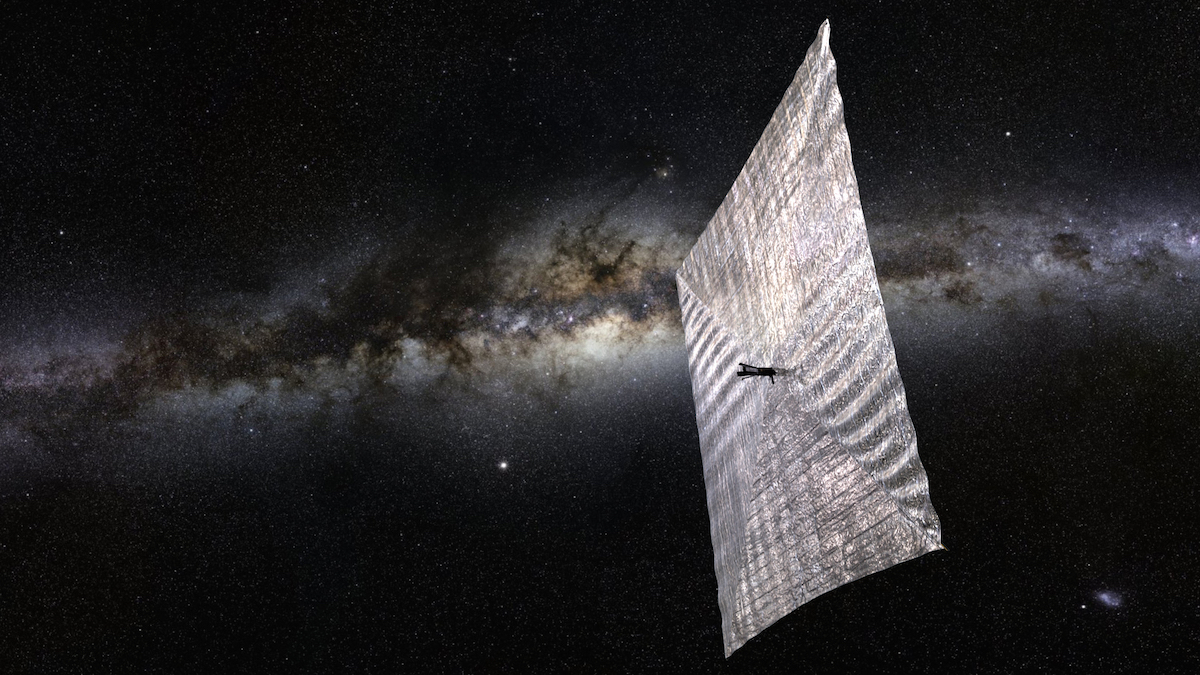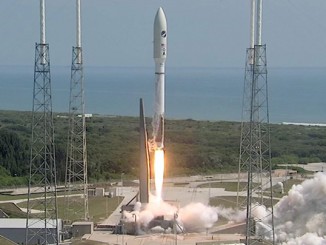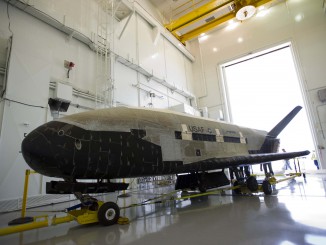
Mission managers say the shoebox-sized LightSail satellite powered up its tiny deployment motor Sunday, and data from the diminutive spacecraft indicate its experimental solar sail unfurled in orbit hundreds of miles above Earth.
The deployment sequence began at 3:47 p.m. EDT (1947 GMT) off the west coast of Baja California, when LightSail was in radio contact with a ground station in San Luis Obispo, California.
“Telemetry received on the ground showed motor counts climbing to the halfway point before LightSail traveled out of range,” wrote Jason Davis, a blogger who has provided daily updates since LightSail’s launch for the Planetary Society, which manages the mission. “Power levels were consistent with ground-based deployment tests, and the spacecraft’s cameras were on.”
Mission manager David Spencer said all indications are the sail deployment was proceeding as planned before LightSail flew over the horizon at the San Luis Obispo tracking site, according to Davis.
The deployment milestone marks the end of a nearly 19-day saga since LightSail’s successful launch May 20.
The Planetary Society, an advocacy group co-founded by legendary celebrity-astronomer Carl Sagan, led the development of LightSail with funding from private donors. NASA paid for the spacecraft’s launch on a United Launch Alliance Atlas 5 rocket.
Sagan dreamed of a light-powered spaceship that could travel vast distances through space propelled by photons, the tiny particles that make up beams of light. If a spacecraft could harness light for propulsion, it could accelerate to great speeds without the need for conventional chemical rockets.
The Japanese space agency and NASA have flown solar sails in space before, and the Planetary Society aims to continue experimenting with the technology. Engineers built the LightSail craft currently in orbit to demonstrate the sail design before a more ambitious test in a higher orbit next year.
Since its launch, satellite fell silent twice, leaving engineers worrying the spacecraft was dead before they could even attempt the sail deployment. Officials blamed the problems on a software glitch and an issue with charging the spacecraft’s batteries.
LightSail radioed home Saturday, and ground controllers scrambled to beam up commands to unwind the booms holding the satellite’s four triangular Mylar sails at the earliest opportunity Sunday.
Before LightSail’s launch, the flight plan called for the solar sail to deploy 28 days after liftoff. But with the spacecraft seemingly in precarious health, officials opted to unfurl the sail early.
The first try Sunday did not work, but engineers sent commands to activate LightSail’s deployment motor when it flew over California again about 90 minutes later, and telemetry showed the motor was moving before the satellite flew out of range.
“We couldn’t get signals to and from our LightSail on the first orbital pass, so we tried again on our next orbit — and it worked! We’ve learned a lot about perseverance on this test mission,” said Bill Nye, the Planetary Society’s CEO. “Although it’s in inertial space, LightSail has had me on a rollercoaster. I want to thank the engineering team; they’ve done fantastic work. I especially want to thank our supporters and members, who made this success possible. We are advancing space science and exploration. This mission is part of our mission.”
Motor is running! Sail is Deploying!!! 39 Years after Prof. Sagan spoke of it!
— Bill Nye (@BillNye) June 7, 2015
The next chance for the ground team to hear from LightSail will occur early Monday, when officials hope to confirm the completion of the sail deployment and receive images from cameras aboard the satellite.
If the sail is fully unfurled, it covers an area as big as a home’s master bedroom, or about 344 square feet. Its guiding booms extend 26 feet, or about 8 meters, tip-to-tip, according to Stellar Exploration, the company that manufactured LightSail under a contract with the Planetary Society.
Japan’s Ikaros solar sail is the largest such structure ever deployed in space. It launched as a piggyback payload with the Akatsuki probe to Venus in 2010.
LightSail was designed to extend to a size 80 times its dimensions when packed up for launch inside the satellite, which is based on the popular CubeSat platform and weighs about 10 pounds.
The sail’s membrane is just 4.5 microns thick, one-fourth the thickness of an average trash bag, but its highly reflective coating could make it visible to observers on the ground around sunrise and sunset.
The Planetary Society has a website showing LightSail’s current projected position and the time of its next flyover, based on your device’s current location. The spacecraft’s track takes it between 55 degrees north and south latitude each time around Earth.
Ted Molczan, a respected amateur satellite tracking hobbyist from Canada, said the solar sail will increase the amount of drag pulling LightSail back to Earth.
LightSail flew at an altitude as low as 220 miles on each orbit before Sunday’s deployment, but Molczan said the satellite will quickly fall back into the atmosphere and burn up. He predicted LightSail’s re-entry would occur some time early Wednesday, but cautioned there is high uncertainty in the satellite’s orbit.
Email the author.
Follow Stephen Clark on Twitter: @StephenClark1.



